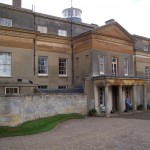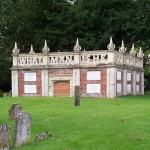 National Trust
National Trust
The timber-framed Courthouse dates from the 15th century, and was used for legal meetings of the three manors into which the surrounding farmlands were divided, and later for other purposes. In the 1890’s it was derelict and under threat of demolition when it became the second property acquired by the nascent National Trust. For a time one of the radical founders of the trust used it for residential workshops for poor boys from the cities, to broaden their minds and foster comradeship between boys and men. After a dispute, the building was re-dedicated to more conventional use, and today the ground floor is let out as accommodation and the upper floor houses a village exhibition.
In the 1980’s the building was (again) refurbished to remove some of the heavy brick infill from the walls and replace the brick with lightweight synthetic panels.
The Courthouse is worth a visit if you are in the region, to see the exterior and the interior, and the exhibition. For no obvious reason, the Courthouse is only open for three days a week in season, plus bank Holidays. Visitors are advised to phone to check availability before travelling a long distance. Allow time to stroll around the village and see many other timber-framed buildings which look as old as the Courthouse.
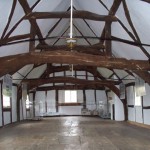
Day: 29 August 2012
Nether Winchendon House
 Privately owned/HHA
Privately owned/HHA
The house is of ancient origins, with the Great Hall dating from the 12th century. The Dining Room, with its fine carved oak frieze and oak linenfold panelling, dates from the 16th century. In the late 18th century the house was extended and remodelled in the then fashionable Strawberry Hill Gothick style. It has been owned by the same family for over 400 years.
Several ground floor rooms are on display to visitors. The Entrance Hall was completed in about 1820 and contains family portraits and some interesting ancient documents. The Dining room, a.k.a the Drawing Room, formerly Sir John Daunce’s Parlour, has an impressive carved oak frieze and ceiling decoration. There is a fine tapestry depicting Lord Russell, one of the former owners, alongside Henry VIII. The ancient Great Hall has a vaulted ceiling which dates from the time of the Gothick alterations. Here are various old family portraits. The Justice Room was created at the time of the Gothick make-over, and is panelled with walnut grown on the estate. Formerly a medieval screens passage and staircase were here. There are various pictures here.
Outside, the screen of arches and folly tower enclosing the courtyard date from the time of the Gothick make-over. The seven acres of gardens were reshaped and replanted in the 1950’s and 1960’s.
The house is opened to the public in April/May, and also on the August Bank Holiday, by timed guided tour. It’s well worth a visit if you are in the region. Nearby are Waddesdon Manor, Long Crendon Court House, and Claydon.
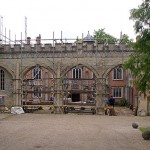
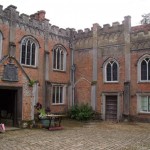
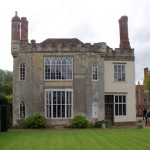
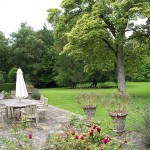
Turvey House, Bucks
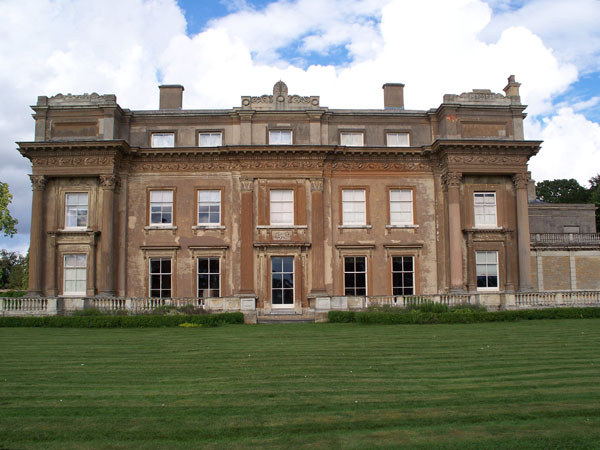 Privately owned/HHA
Privately owned/HHA
Turvey House was built by one John Higgins in 1792, on the ruins of an earlier house. In 1813 his son inherited and substantially remodelled the house, turning it into a neoclassical mansion on three floors, and moving the entrance from its original position facing the river, to the courtyard, where it is next to a wall hiding the kitchen and service quarter. A tunnel allows the servants to come and go from the kitchens out of view of the gentry. There are 21 bedrooms (including former servants’ rooms and nurseries).
Downstairs the rooms on view contain much fine furniture and ceramics, and relics from foreign travels. The entrance hall has a dome reaching up to the roof. Also on view are the Drawing Room, Dining Room, Library and Billiard Room. Upstairs, the visitor can enter or peer into some of the bedrooms.
There is a fine cast iron spiral staircase, said to have come from the Great Exhibition of 1851, linking the first and second floors.
When navigating to the house, I suggest that you not use the postcode (I did, and ended up in the middle of the farm estate.) Use Turvey, Carlton Road instead. The entrance gates for the house are in the middle of the village, next to the church. If you can’t locate the church, look for the brown signs in the middle of the village to “Country Park” and follow this road for about 100 metres. There is an unusual Higgins Mausoleum in the churchyard. The inscription on it reads: What man is he / that liveth /and shall not / see death?
The house is opened on sundry dates during the summer months. It’s worth a visit if you are in the region.
